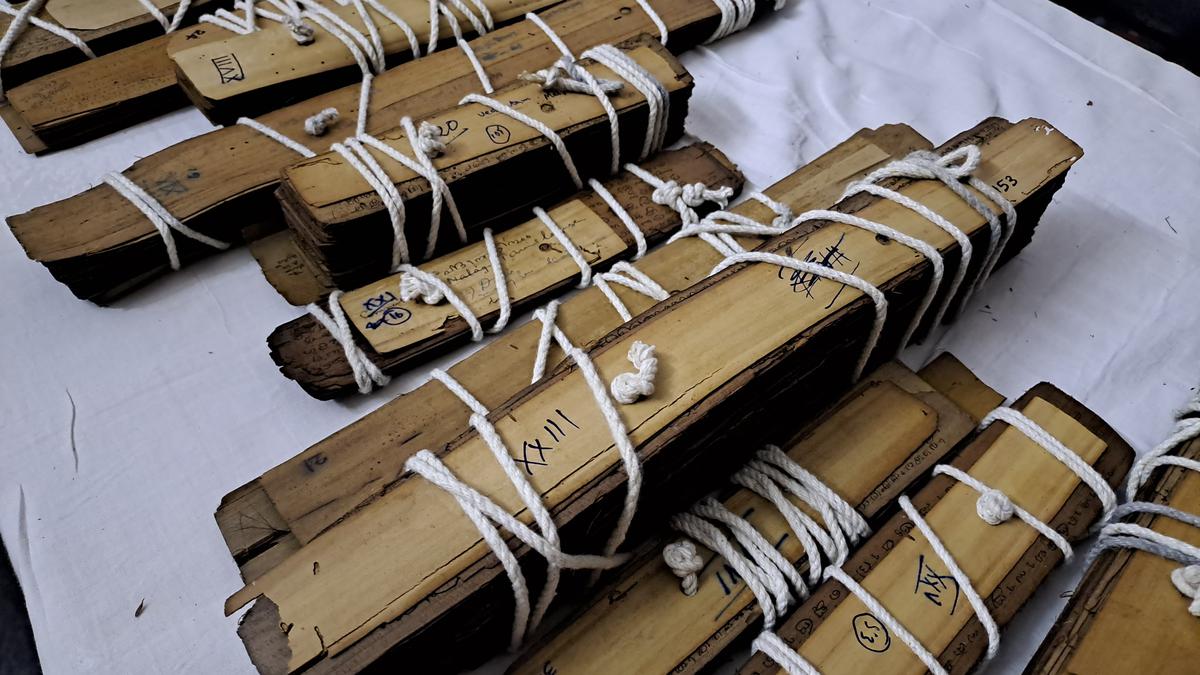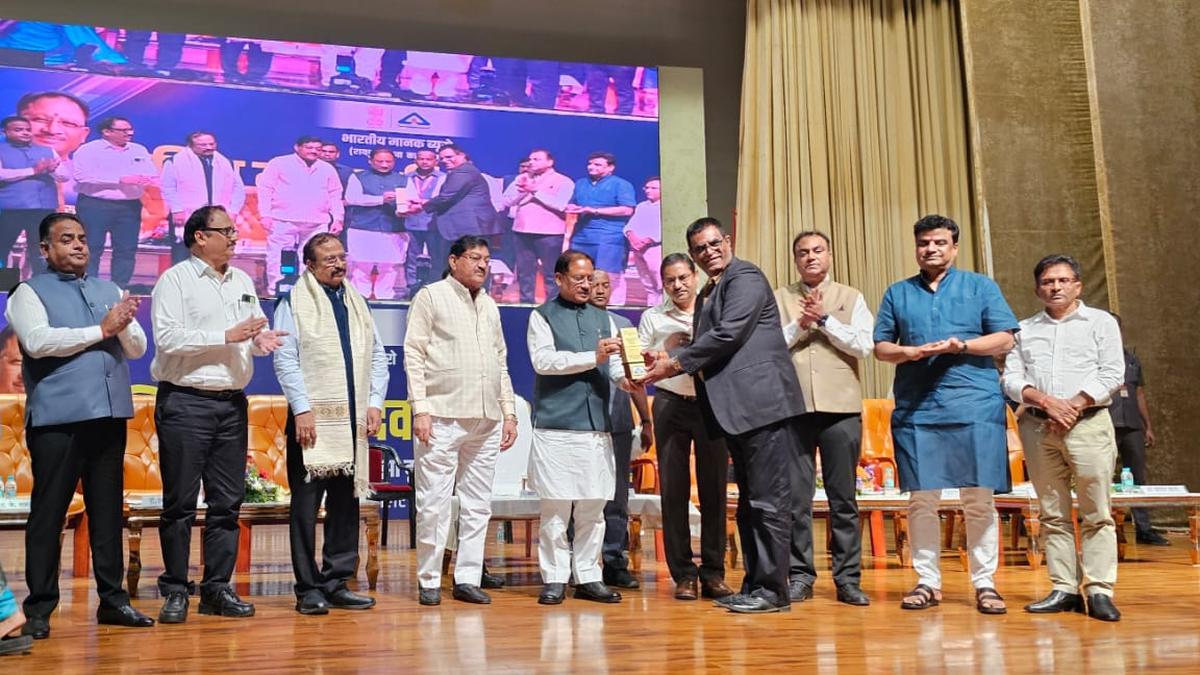The palm-leaf manuscripts found at a house in Neeramankara in Thiruvananthapuram.
A nondescript box in a house in the Neeramankara area of the city has yielded what is perhaps one of the largest collections of palm-leaf manuscripts in a private collection in recent times. The collection becomes more significant as it belongs Ilathur Ramaswami Sastri, a distinguished court scholar of the erstwhile Travancore.
Anandaraj G., assistant professor in the Department of Sanskrit, HHMSPB NSS College for Women, Neeramankara, who has examined the collection and is doing a preliminary cataloguing, says the collection came to light when Geetha Ravi, a descendant of Ramaswami Sastri, was about to dispose of her house and mentioned about the palm-leaf manuscripts in her possession to a distant relative R. Krishnamurti who is known to Dr. Anandaraj.
As Dr. Anandaraj teaches Sanskrit, he was familiar with Ramaswami Sastri, a court scholar associated with four kings of erstwhile Travancore, and so decided to examine the manuscripts to see what he could found.
The collection of 26 palm-leaf bundles is in almost good condition and contains texts on various branches of knowledge such as literature, aesthetics, Vedanta, law, Tantra, mathematics, Vedalakshana, Mantrasastra, rituals, and so on. Dr. Anandaraj says there are many that are rare and worthy of further research. One of them ‘Nyayarakshamani’ is a full text on the logic of Vedanta, and will be beneficial to research scholars, he says.
Ilathur Ramaswami Sastri reached Travancore from Ilathur in Pandalam during the time of Uthram Thirunal Marthanda Varma, and became the court scholar. He was named best poet of Kerala in the middle of 19th century, and was known as Bheeshmacharya of Sanskrit eloquence. He was also one of the Vedanta teachers of Chattambi Swami. Some of Ramaswami Sastri’s works, including a retelling of the Ramayana and one on metrical poetry, have been brought out in recent years by Ms. Ravi’s father R. Yajna Narayanan.
Dr. Anandaraj says a movement towards democracy started in Travancore under Moolam Thirunal Rama Varma. The palm-leaf manuscripts now discovered reflect such new thoughts and ideology, and these would have reached Moolam Thirunal too, says Dr. Anandaraj.
The manuscripts are also important to trace the transition from Grantha script to Malayalam, and very useful for script learning and historical paleography.
The palm-leaf bundles include primers and those used by Ramaswami Sastri for his studies, and so are more reliable for critical studies, says Dr. Anandaraj.
Dr. Anandaraj is currently going through the collection and indexing them before handing it over to the Oriental Manuscripts Library under the University of Kerala, Karyavattom. Attempts are also on to get it listed under Ilathur Ramaswami Sastri’s name so that it can be easily accessible to students and research scholars. “It is significant that the collection came to light in the 200th year of Ramaswami Sastri’s birth.” he says.




